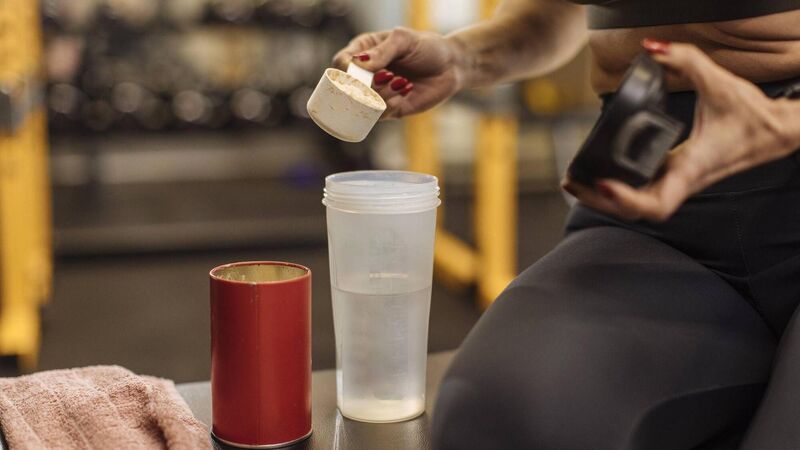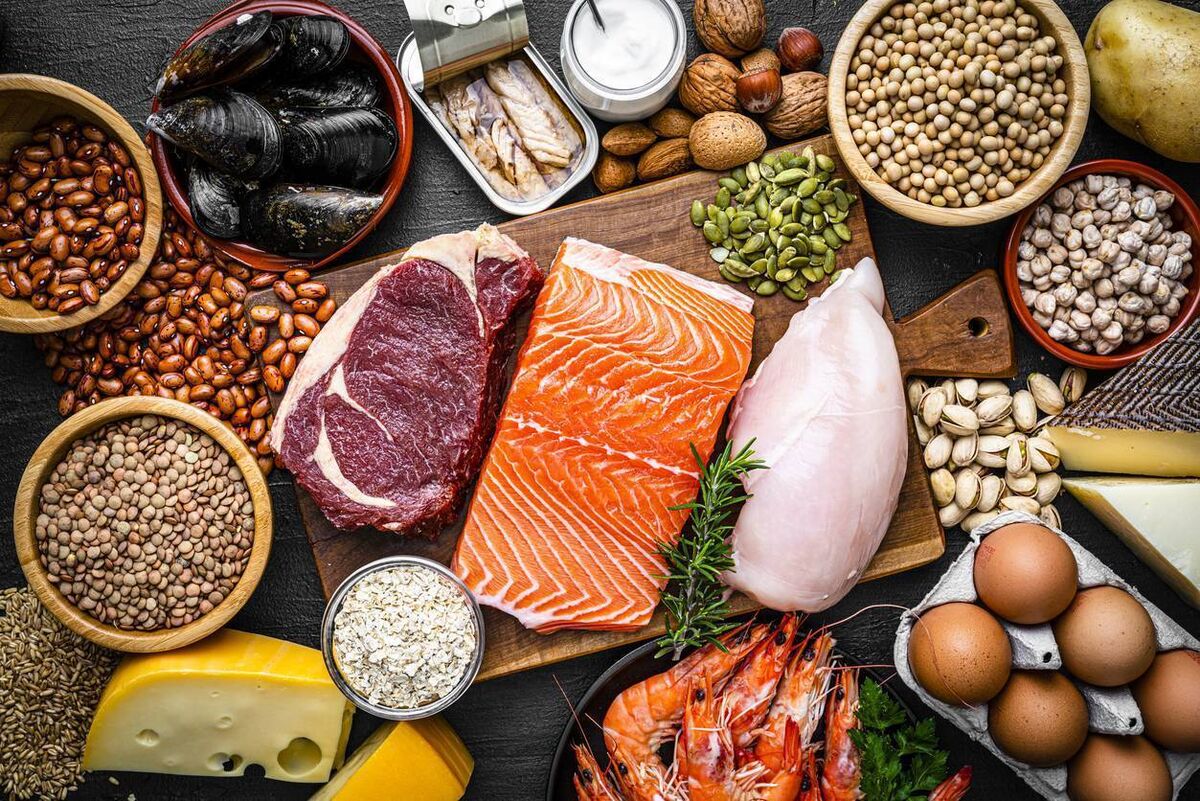Are we really getting enough protein?

Protein shakes or powder could have a role for body builders as part of a balanced diet or for older people with small appetites, writes Catherine Conlon.
Are we really not getting enough protein and what are the best sources?
Protein is everywhere right now. It sells, offering health as it builds muscles and maintains body weight. Almost half of Irish adults over 40 believe they do not eat enough or are unaware if they are consuming the right amount, according to an iReach survey of 1,000 adults commissioned by John West in 2022. And despite protein requirements increasing as we get older, half of over over-55s think they should eat the same amount throughout their lives.
Is this the kind of protein we need? Are we improving diet quality or responding to more marketing health claims that have more to do with profit than nutrition?
Are we really not consuming enough, and what are the best sources of protein?
In fact, the evidence shows that adults on average, are getting more than enough protein. The recommended daily intake is 0.8g per kilo of body weight, so somebody weighing 70kg would need 56g per day. People often think of protein as coming from meat or chicken, but other foods like dairy, legumes (beans, peas and lentils) as well as nuts and seeds are good sources of protein.
Aim for 20g to 25g per meal, which is roughly 2 eggs on wholegrain toast, a small chicken breast, 75g of fish, or a cup of cooked lentils. Snacks with about 10g of protein include 200g of plain yoghurt, 2 tablespoons of peanut butter on wholegrain toast, wholegrain cereal with milk or soy, or a handful of mixed nuts.

The HSE Healthy Ireland Food Pyramid offers great advice on what the required number of servings from the different shelves on the pyramid look like. For instance, daily servings of milk, yogurt and cheese should be 3 servings a day (5 if you are between 9 and 18). Examples of servings include a glass (200ml) of milk, a carton (125g) of yogurt, or 2 thumbs (25g) of hard cheese.
In terms of meat, fish, poultry, eggs, or nuts, the food pyramid recommends two servings a day. One serving of meat is about 70g, or about the size of the palm of your hand. All of these serving sizes look relatively modest compared to portion size and numbers of daily servings of protein foods that many of us are accustomed to in the western diet.
The Food Safety Authority of Ireland published updated guidelines for older adults in 2021. These guidelines advise that older adults at risk of frailty and sarcopenia should eat a minimum of 1-1.2 g per kg body weight of protein per day to preserve muscle mass. The guidelines refer to people over 65, but could probably apply from the mid-fifties onwards.
Adults begin to lose muscle mass, typically about 3% - 5%, each decade after the age of 30. The loss begins to become more noticeable and speed up at around age 60 and can lead to drastic mobility loss, frailty and loss of independence if not addressed. Exercise- particularly strength training- as well as nutrition are key factors in slowing down the rate of muscle loss or sarcopenia as we age.
A paper published in (2024) examined the dietary pattern protein intakes on the island of Ireland to identify protein intake and sources of protein in the study group. Overall, 17% of total energy was obtained from protein and over three-quarters (77%) of participants met their daily recommendations of protein intake. Those taking higher levels of protein tended to get it mostly from meat, fish and chicken compared to those getting lower levels of protein daily who consumed more processed meats such as burgers, sausages, meat products, white bread, cakes, pastries and fruit pies.
Many people who are involved in intensive exercise programmes and gym workouts are impressed by viral TikToks and influencers urging them to up their protein intake. The evidence suggests that the vast majority of people are already eating enough protein to build muscles, and 1 to 1.2 g of protein per kilo of body weight will more than cover their needs.
Protein shakes or powder may play a role for body builders or as part of a balanced diet for older people with small appetites who struggle to get enough from food.
In (2022), physician and head of the Academic Department of Gerontology, Rose Anne Kenny suggests that supplements to enhance muscle power are not just for body builders.
Given that the production of protein is impaired in ageing, that proteins are key to the strength of muscles, and that muscle wasting accelerates with age, including sarcopenia, protein supplements should be used to complement resistance exercise programmes.
"The most appropriate are those that target protein synthesis and thereby muscle metabolism and muscle strength, such as whey protein," Prof Kenny writes, adding that she takes a protein whey drink after each resistance training session.
In terms of protein snacks, many of them are high in protein but also high in sugar and saturated fat. A Safefood survey in 2019 looked at the nutritional content of a range of high protein foods and drinks available for sale in Ireland. The number of products on the market in recent years has exploded with the perception that high protein diets lead to weight loss and the build-up of muscles.
The research found that over a third (38%) of protein bars listed chocolate as their main ingredient, while three-quarters (77%) were high in saturated fat and the majority were a source of salt.
The survey found that a lot of salt, additives, chocolate and sweeteners were added to the bars and that the calorie content was on average similar to a standard chocolate bar of 200 calories.
Safefood said at the time that in general people are already consuming more protein than they need from their diet.
"For the vast majority of people, these bars and snacks are just a waste of money and should be avoided."
The bottom line is that most of us are getting more than enough protein to meet our daily needs, and the best source is generally from a plate, not from a packet. So, get a natural source such as meat, chicken, fish, dairy, nuts, lentils and chickpeas.






 App?
App?





